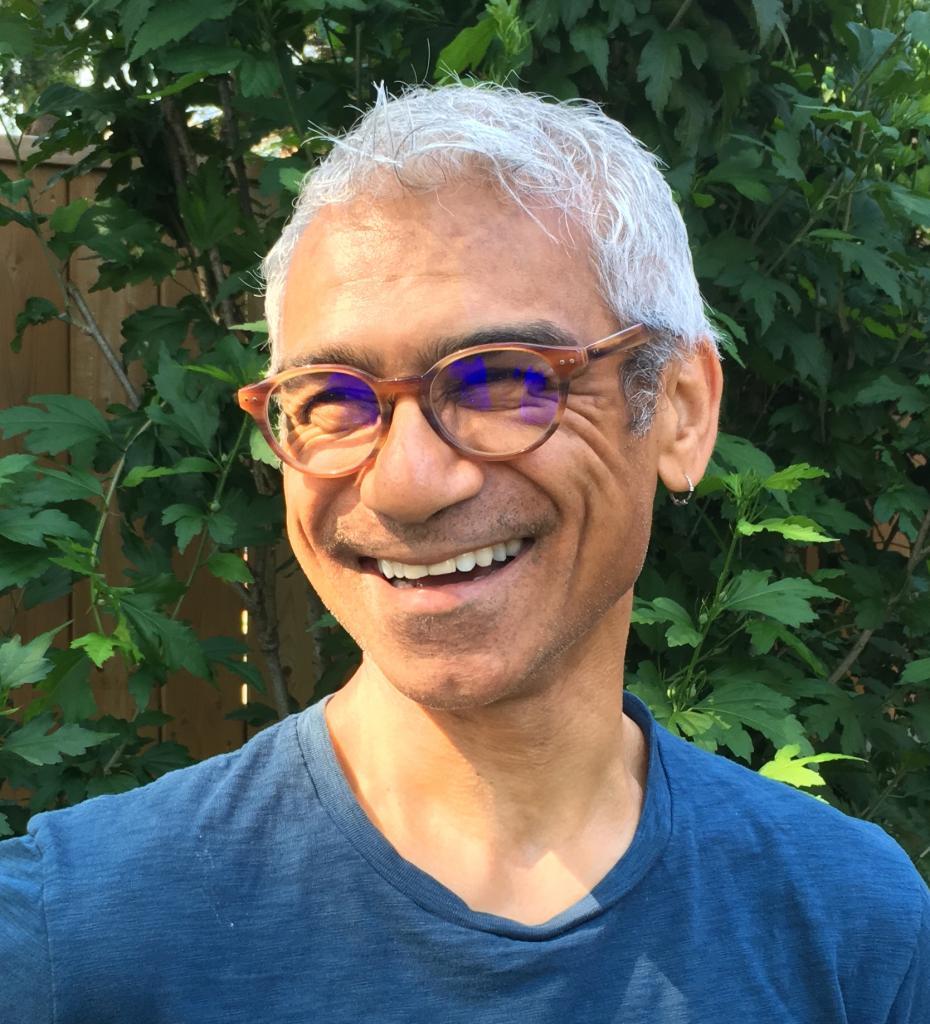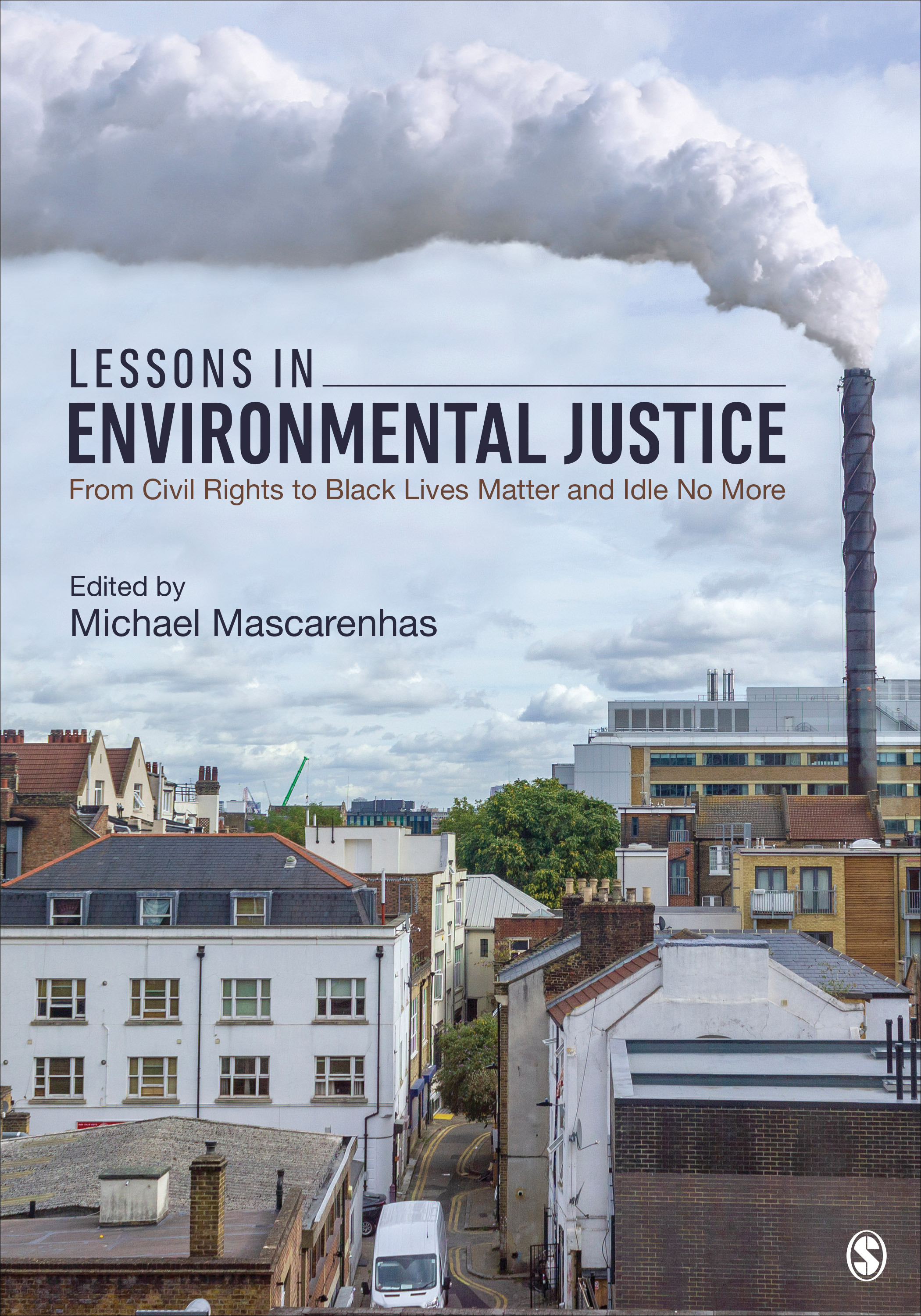In August, Environmental Science, Policy, and Management professor Michael Mascarenhas sat down for a virtual interview about his new book, Lessons in Environmental Justice: From Civil Rights to Black Lives Matter and Idle No More. The book is a collection of eighteen essays which explore a wide range of environmental justice issues and debates. Rausser College professors Elizabeth Hoover and Rachel Morello-Frosch contributed to the book, as well as alumni Beth Rose Middleton and Carolina Balazs. Mascarenhas’ research highlights how vulnerable and marginalized populations bear a disproportionate share of environmental risks. In this interview, Mascarenhas also discusses his experience as an environmental justice professor at Berkeley, as well as the intersection between the current pandemic and environmental justice.

Can you tell me about your research?
I am a sociologist interested in how policy impacts marginalized people’s access to basic needs, especially water. Water is a primary indicator of public health. Without clean water, people can’t feed themselves, bathe, and remain healthy. Water has become integral to all facets of capitalism, including agriculture, industrial operations, and suburbia. The pressures of climate change have forced us to recognize the limits of this resource and its impact on social justice in the twenty-first century. While I’ve also begun to study the nonprofit sphere, my work is rooted in examining the connections between racism and environmental injustices.
What inspired you to edit Lessons in Environmental Justice? How did the idea for the book come about?
As I began to work towards my PhD, I realized that the theoretical frameworks I learned about were not relevant to the questions I had about dispossession, racism, and poverty. On top of that, environmental sociology was a white space, and I felt like I wasn’t really in my own field of expertise.
Later, I took on the position of Chair of the Committee on Racial Equity for the Environmental Sociology Division of the American Sociological Association. Through my position as the chair, I held a conference called “Bridging the Gap” which brought together environmental sociologists, government agency staff, and community organizers. I ensured that the panel included people of various backgrounds, and I encouraged contact between scholars and community groups.
The event pushed environmental sociologists to be more engaged and intersectional in their scholarship, and it inspired this textbook, Lessons in Environmental Justice. Thus, this book is really the culmination of decades of the desire to recenter the field of environmental justice in order to make it less academic and more empowering.
How does this book differ from or relate to your previous works on natural resource inequities?
My first book, Where the Waters Divide, is an ethnography involving communities in southern Ontario to study the racialized consequences of provincial and federal water policy. The second book, New Humanitarianism and the Crisis of Charity: Good Intentions on the Road to Help, focuses more on the way corporations and philanthropists affect water access in Africa and Asia. In contrast, Lessons in Environmental Justice uses a broader lens to advance theoretical and methodological questions in the field of environmental justice.
Traditionally, scholars of environmental justice typically work through case studies, first assessing disproportionality and then lobbying the government for better laws. For example, scientists in Richmond found differences in air quality which primarily affected people of color, and then they lobbied the state government to implement solutions. These actions can have positive impacts, but the structure of study assumes that we live in a world where the government isn’t always and already embedded in racist structures. What happens when the state is complicit in environmental discrimination? Who do activists go to then? To advance the field, Lessons in Environmental Justice incorporates ideas on theory, scholarship, and activism to shape how readers think about justice inequities and environmental law.

What are your thoughts about, and your approach to, teaching environmental justice at Berkeley? How do you hope the book impacts students, both at Rausser College and more broadly?
As the professor of our Environmental Justice course, I want to set up a theoretical framework which gives students access to environmental justice. My lessons act as a toolkit, offering different ways to address various environmental problems. What I find to be most empowering about the class, however, is the community engaged research that students are required to complete. Students are able to get out of the classroom to build partnerships in the community and use that opportunity to study what they are passionate about. The work gets students interested in politics, and it makes them lifelong advocates for environmental justice issues. They then present their projects at the end of the semester, so other students also get a sense that environmental justice is a struggle that unites everyone.
I really want the book to provide an entry point to help cultivate students’ interests, making the field accessible to younger people. After learning about environmental issues, students are often left overwhelmed by the task at hand. By providing examples of individuals, scholars, and community groups working for justice, the textbook shows students that change can occur within multiple structures and systems. It’s my hope that it empowers students to continue working in environmental justice.
How has the COVID-19 pandemic impacted the environmental justice movement?
COVID-19 has highlighted the deep forms of environmental injustice that are embedded in the United States. For example, privileged and mostly white Americans can shelter in place, work from home, even save or profit from the current pandemic, while others, such as farmworkers and meat plant workers, struggle to get access to clean water or must continue to work in unsafe conditions during the pandemic. Many people who were already impacted by environmental hazards, and now doubly impacted by the pandemic. I hope this double burden will encourage people who have not taken action against injustices to no longer be innocent and no longer be complicit in injustice.
What are some projects or research initiatives that you’re currently working on, or that you’re interested in doing in the future?
I am currently writing a grant which would support my research on water systems and race. Most water infrastructures in this country are near their sunset dates, as seen with the ongoing Flint water crisis. New projects must address diversity, equity, and inclusion, three enduring social problems in the distribution to environmental amenities. If people in low-income neighborhoods are not included in water planning, cities risk exacerbating previous inequities in their community.
I am also writing a book exploring the intersection of urban austerity and water access using the cases of Flint and Detroit. We have much to learn from what happened in these cities of color and the costs, both social and environmental, when the racialization of austerity measures are allowed to run unabated.
Lastly, I would also like to explore the Asian diaspora and issues of racism through my own story. During the pandemic, racism against Asians has come to the forefront of many people’s attention, and it seems to be okay. I think members of the Asian diaspora are seen as eternal immigrants, unable to completely assimilate into a western country regardless of how much time they’ve spent there. So I want to tell that story, the legacy of Asian immigrants, with my own lense as a descendent of South Asians.
